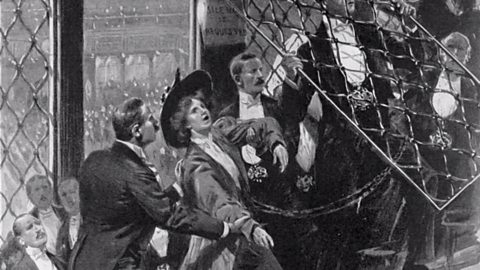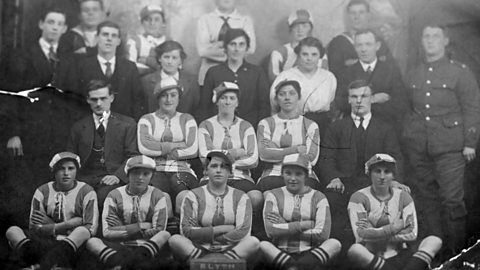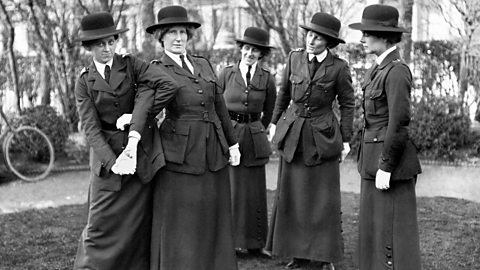Video summary
Looking at the position of women in pre-war Britain and the suffrage campaign, this is a scene setting, context establishing piece.
The start of World War I brought about great social changes for Britain across all the classes; working class women had paid opportunities to work in the factories, while middle class women joined the Women’s Volunteer Reserve.
Kate Adie explores these changes from the women’s perspective, but also the men’s.
There are some upsetting scenes in this clip. Teacher review recommended prior to use in class.
Teacher Notes
The class could be spilt into groups and take part in a role play activity.
One to support a continuation of civil disobedience. A second to advocate suspending the action and support the government.
A third to represent the government’s efforts to convince the suffragettes to help.
The non-performers can be the public and vote for the most convincing arguments.
This clip will be relevant for teaching History at KS3, KS4/GCSE, in England and Wales and Northern Ireland.
Also at 3rd Level, Fourth Level, National 4 and National 5 in Scotland.
This topic appears in OCR, Edexcel, AQA, WJEC, CCEA GCSE and SQA.
How the first women gained the right to vote in 1918. video
Kate Adie discovers how the Representation Act gave some women the right to vote at the end of Word War One.

How women joined the war effort in World War One. video
Kate Adie explores how women of all classes joined the workforce overseas and on the 91Čȱ¬ Front.

How women's football thrived in World War One. video
Kate Adie explains how women's football teams, such as The Blyth Spartans and star player Bella Raey, thrived in WW1.

Women in medicine and health in World War One. video
Kate Adie explains how women staffed the medical services and broke down social attitudes during WW1.

The rise of the girls' night and the first women's police force in WW1. video
Kate Adie explains the story of Margaret Damer Dawson, the Women's Police Service and the rise of the girls' night out in WW1.

Ěý